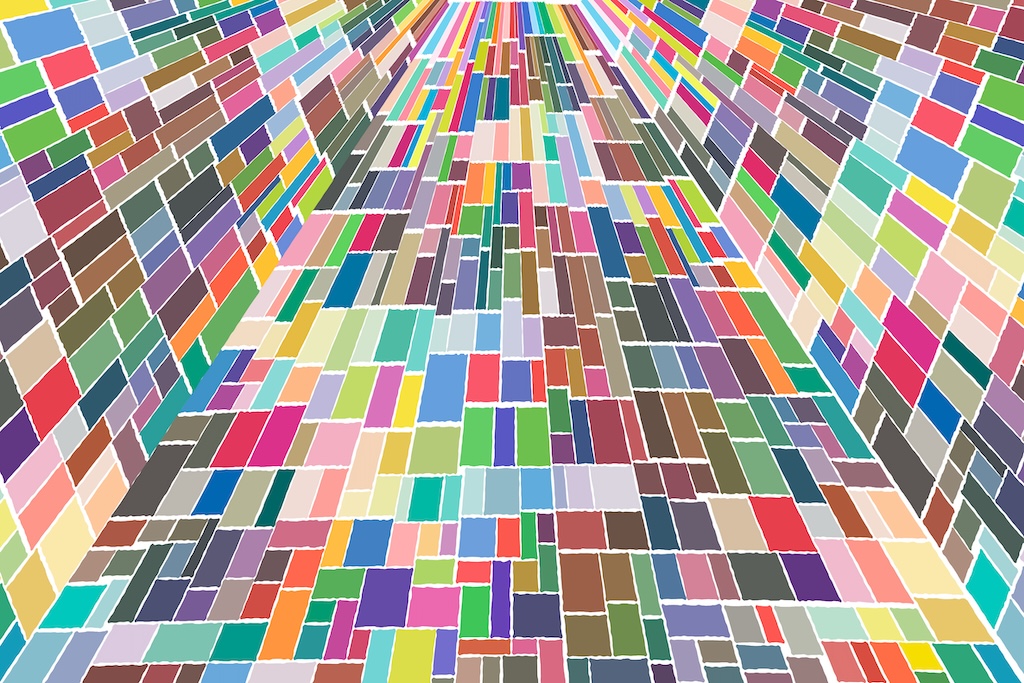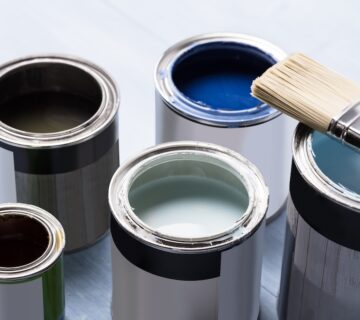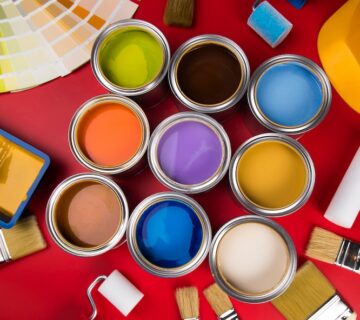Paint is not just a medium to add color to your walls; it’s a tool that can be used creatively to transform spaces and create stunning visual effects. One of the more intriguing uses of paint in interior design is to create optical illusions. These illusions can make rooms appear larger, ceilings higher, or even add a dynamic, artistic element to your living space. In this blog, we’ll explore how you can use paint to create optical illusions in your home.
Creating Space with Color
Expanding Small Rooms
Light colors are known to make a room feel more open and airy. Painting a small room in light blues, greens, or neutrals can create the illusion of more space. Additionally, painting the ceiling a lighter shade than the walls can give the impression of height. Reflective and satin finishes can also contribute to the effect by bouncing light around the room, further enhancing the airy quality.
Cozying Up Large Spaces
Conversely, darker colors can make a large, impersonal room feel more cozy and intimate. Dark hues absorb light, reducing the perception of space. This effect is ideal for creating a snug, comfortable ambiance in oversized rooms. To enhance the cozy effect, use rich, warm colors like deep reds, browns, or navy, which can create a sense of warmth and enclosure.
Using Stripes to Alter Perception
Vertical Stripes for Height
Painting vertical stripes on walls can create the illusion of higher ceilings. This effect is achieved because vertical lines draw the eye upward, making the walls appear taller than they are. The stripes don’t have to be bold; subtle variations in sheen or a slightly darker or lighter shade than the base wall color can be just as effective.
Horizontal Stripes for Width
Horizontal stripes can make a narrow room feel wider. This illusion works as the horizontal lines visually stretch the walls, making them appear more expansive. Using colors of similar hue but different tones can enhance this effect without overwhelming the space with too much contrast.
Trompe-l’oeil: Trick of the Eye
Creating Depth and Dimension
Trompe-l’oeil, a French term meaning ‘deceive the eye’, is an art technique that uses realistic imagery to create three-dimensional illusions on flat surfaces. You can paint a faux window with a view, a fake bookshelf, or an imaginary door that seems to lead to another room. Skillfully rendered, trompe-l’oeil can add whimsy and visual interest to a room, sparking conversations and curiosity.
Adding Architectural Details
Paint can be used to create the illusion of architectural details. For instance, you can paint faux moldings, beams, or even a fireplace for a touch of elegance without the need for actual construction. These painted additions can introduce character and a sense of craftsmanship to modern walls that lack architectural features.
Geometric Patterns for Dynamic Spaces
Geometric patterns, when painted cleverly, can add movement and interest to a room. By using contrasting colors and shapes, you can create walls that appear to have a textured surface or depth, adding a dynamic and modern touch to your space. The key is to find a balance that complements the room without becoming overwhelming.
Creating Focal Points
An accent wall painted in a bold or contrasting color can serve as a focal point in a room. This not only adds visual interest but can also divert attention from less attractive features of a space. The focal point should harmonize with the overall design and serve to draw everything together in a cohesive manner.
The Magic of Reflective Paint
Reflective or metallic paints can be used to create a mirror-like effect on walls or ceilings. This is particularly effective in dark or small spaces, as it reflects light and gives the illusion of a more expansive area. When used in small doses, such as on trims or in recessed areas, they can provide subtle highlights that contribute to the overall dynamics of the room.
Final Thoughts
The power of paint in creating optical illusions is a testament to its versatility as a decorating tool. By understanding how colors and patterns can influence perception, you can use paint to not only beautify your home but also to transform it in ways that enhance its space and character. Whether it’s through the strategic use of color, the clever application of patterns, or the magical touch of faux finishes, paint can significantly alter our experience of a room. Engaging with paint’s transformative potential can turn the process of decoration into an adventure in perception. For more creative painting ideas and home decor tips, visit our website at sisupainting.com and check out our blog at sisupainting.com/blog.





No comment